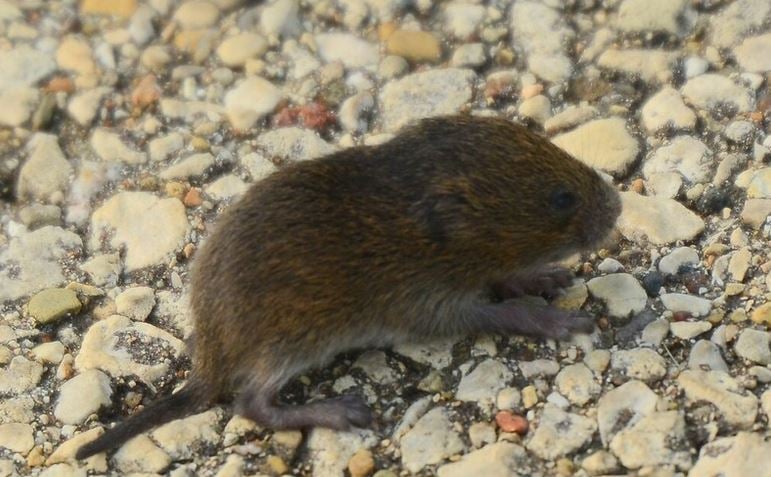Comprehensive Guide to Effective Vole Bug Control: Infestation Recognition and Therapy Techniques
In the realm of effective parasite control, vole invasions present a special difficulty that requires a critical approach. These small rats, often mistaken for mice, can damage gardens, grass, and crops if left untreated. Recognizing the signs of vole visibility and carrying out targeted treatment approaches are vital components of an effective insect monitoring plan. By exploring the nuances of vole actions, comprehending essential indications of invasion, and reviewing a series of control options, one can establish a comprehensive approach to fight these evasive insects.
Comprehending Vole Actions
Vole habits is identified by their tunneling practices and rapid recreation rates, making them a difficult insect to control effectively. Their quick reproductive rate further makes complex control initiatives, with females qualified of generating several litters in a solitary year, each consisting of a number of children.
Voles are most active throughout the early morning and evening hours, spending the majority of their time foraging for food. Their burrowing habits not only disrupt yards and grass yet also make them testing to get rid of and detect. Understanding vole habits is essential for effective bug control techniques. By recognizing their burrow places, keeping track of feeding locations, and executing targeted control approaches, such as trapping or environment adjustment, vole problems can be managed effectively.
Indicators of Vole Infestation

Avoidance Strategies
Implementing effective prevention techniques is vital in decreasing vole problems and guarding plant life from their devastating feeding habits. To protect against vole invasions, it is vital to start by removing prospective food resources and shelter.
On a regular basis checking the building for indicators of vole activity, such as paths and delve openings, is important for early discovery and timely action. Think about making use of catches or repellents tactically placed near their pathways if vole task is presumed. Utilizing all-natural predators like owls or serpents can likewise help maintain vole populations in check. By applying a combination of these avoidance garden enthusiasts, strategies and house owners can effectively secure their vegetation from vole damage.
Non-Lethal Control Approaches
To effectively take care of vole populations while prioritizing humane techniques, non-lethal control methods supply practical services for decreasing vole damage in gardens and landscapes. One efficient technique is the usage of physical obstacles such as equipment fabric or cord mesh to shield at risk plants. These obstacles can be hidden at the very least 12 inches curved and deep at a 90-degree angle to protect against voles from burrowing underneath. Furthermore, habitat adjustment can hinder voles by reducing their chosen food sources and hiding areas. Keeping a well-mowed yard, removing debris, and maintaining plant life cut can make the setting much less attractive to voles.

Lethal Control Options
One reliable technique for dealing with vole problems in landscapes and yards involves the critical use deadly control options. When faced with an extreme vole infestation that non-lethal approaches have fallen short to have, executing deadly control measures ends up being crucial. One typically used dangerous control option is the usage of breeze catches. These traps are developed to swiftly and humanely eliminate voles upon activation, making them a popular option for lots of garden more tips here enthusiasts and landscapers. To boost the effectiveness of snap traps, it is suggested to place them in areas where vole activity is high, such as along runways or near burrow entrances. Another deadly control choice is the application of toxic baits particularly developed to target voles. These lures consist of poisonous substance that Read More Here is consumed by the voles, leading to their eventual demise. Care must be exercised when using toxic baits to prevent harm to non-target animals or family pets. Generally, when using deadly control choices, it is important to do so sensibly and based on regional policies to efficiently manage vole infestations.
Verdict
Finally, efficient vole insect control requires an extensive understanding of vole behavior, identification of indicators of problem, execution of prevention approaches, and usage of both deadly and non-lethal control methods. By integrating these strategies, individuals can properly handle vole populaces and protect their home from damages. It is necessary to attend to vole infestations without delay to protect against additional concerns and minimize the effect on the surrounding setting.
Given the elaborate passage systems and quick reproduction rates particular of voles, recognizing the indications of vole problem ends up being essential in effective bug control. One of the primary indicators of vole existence is the visibility of surface area runways or trails in turf or snow, commonly about 1-2 inches broad, produced as voles travel in between their burrows and food resources.To properly take care of vole populaces while prioritizing humane methods, non-lethal control techniques provide functional options for lowering vole damages in yards and landscapes.One effective method for attending to vole problems in landscapes and yards involves the tactical usage of lethal control alternatives. vole yard damage.In conclusion, effective vole insect control calls read this article for a thorough understanding of vole actions, identification of signs of infestation, implementation of avoidance approaches, and utilization of both lethal and non-lethal control approaches